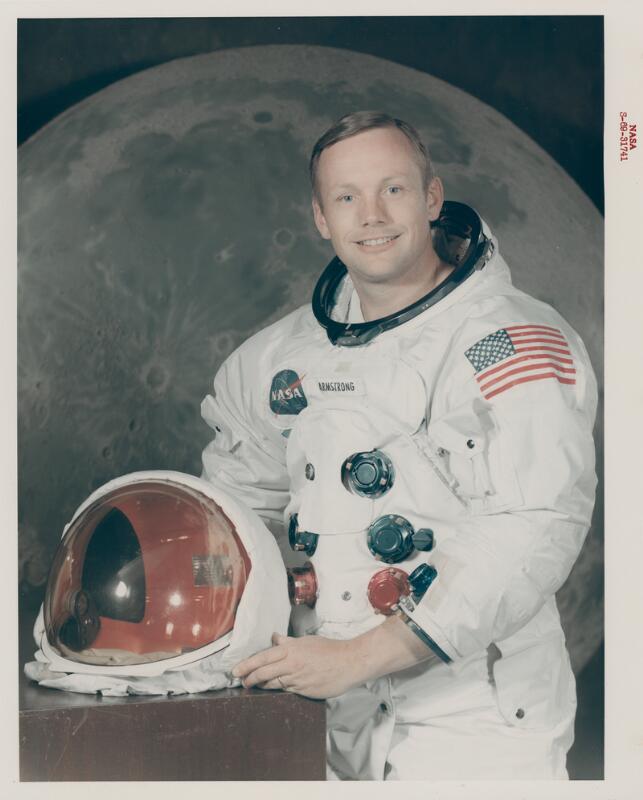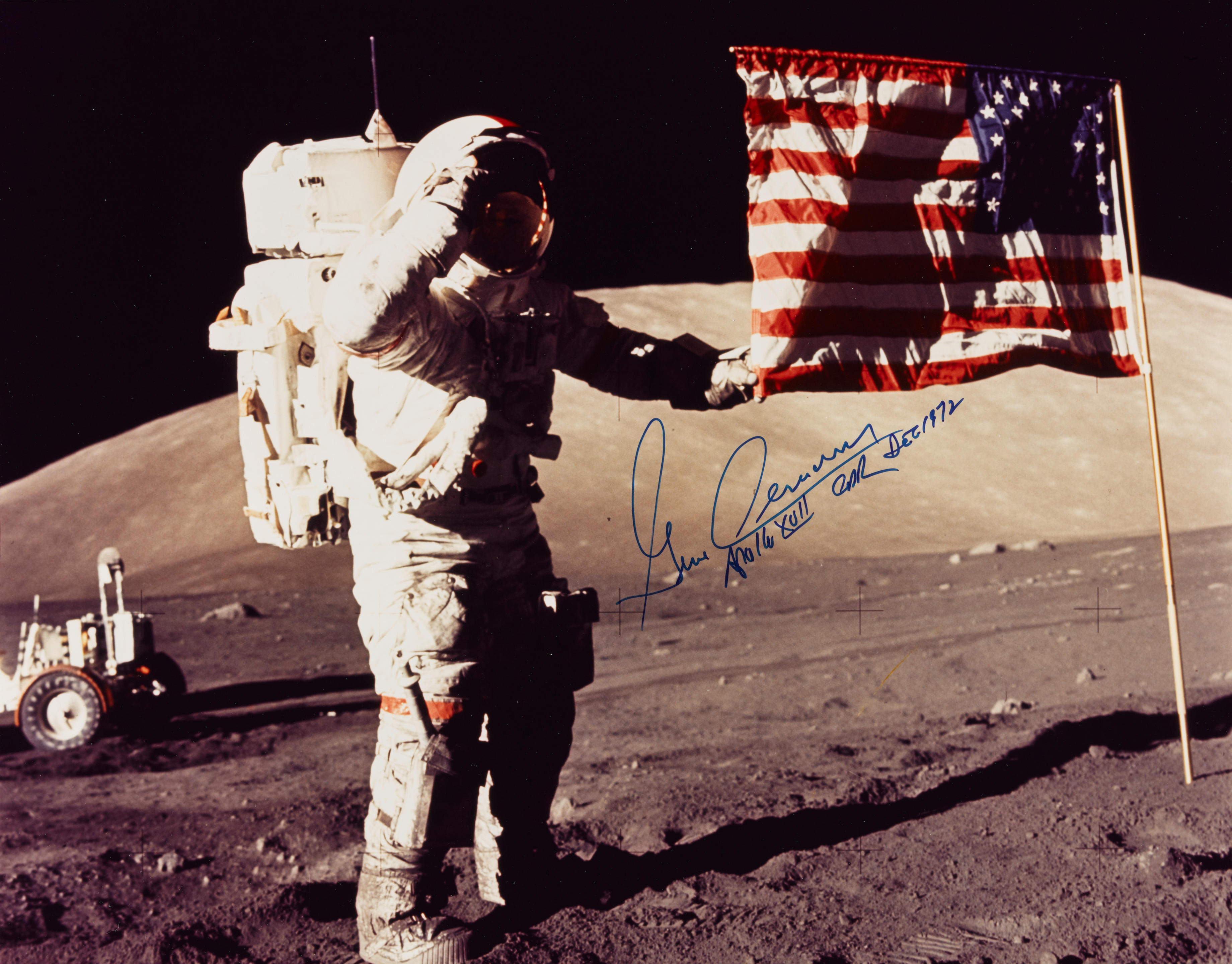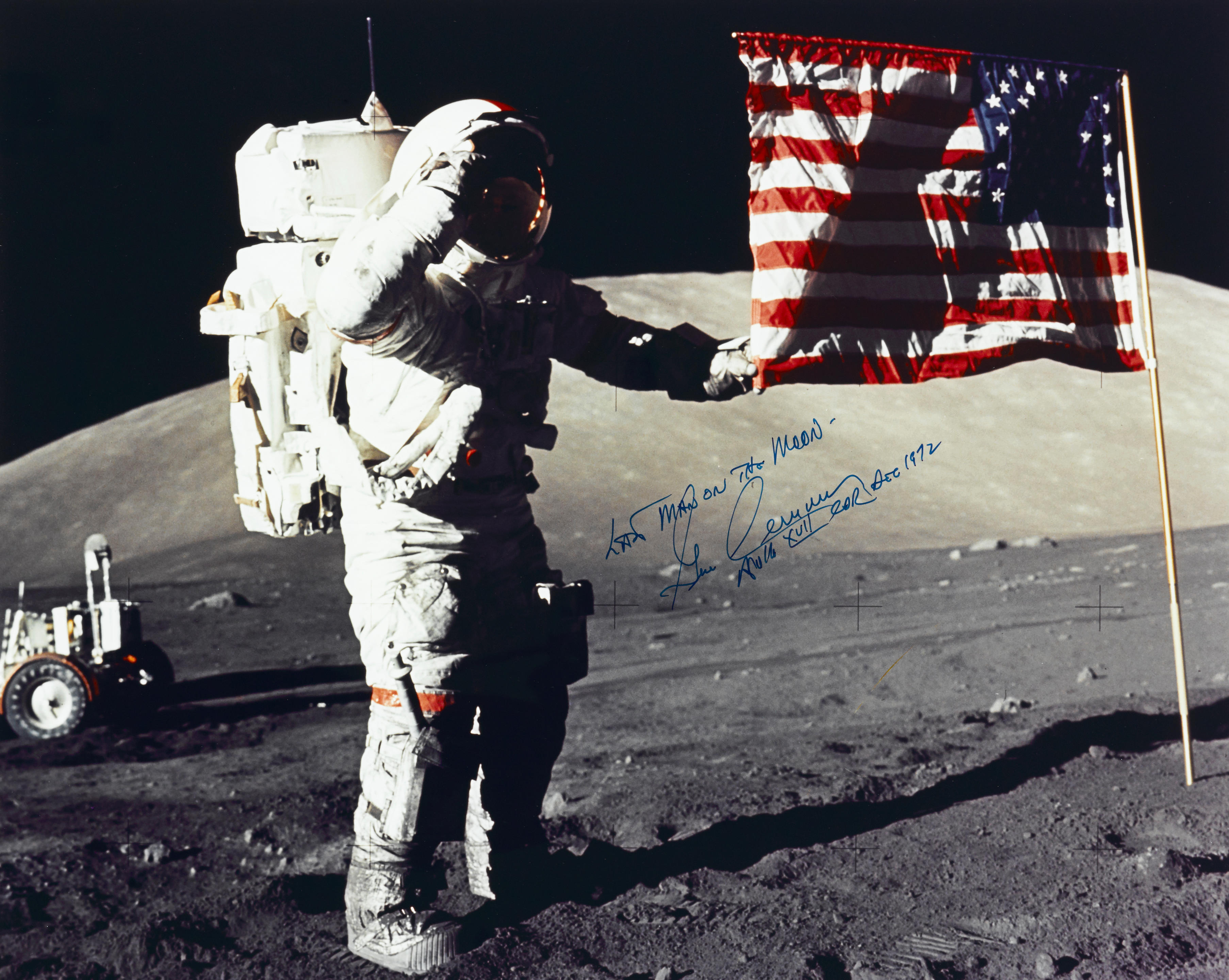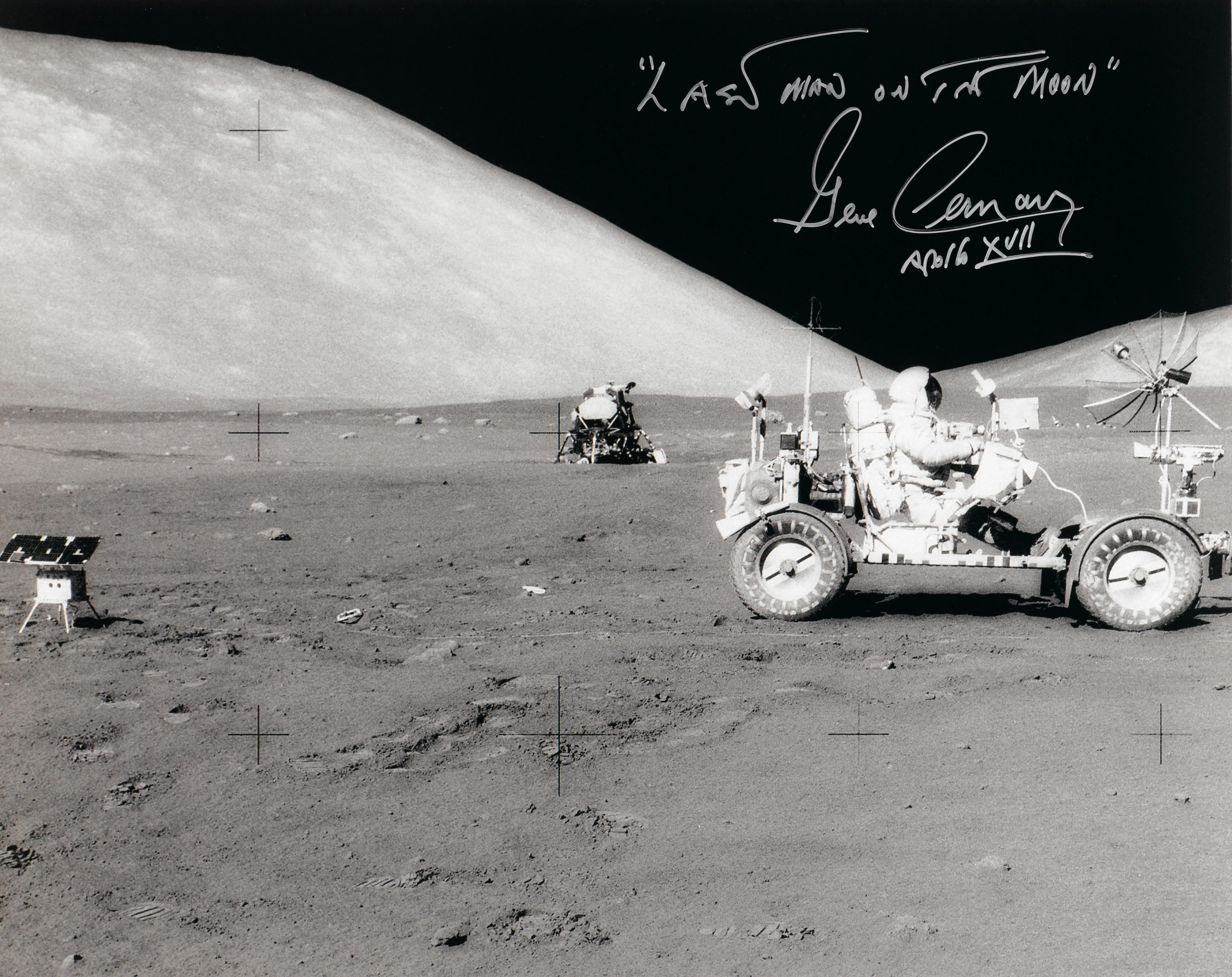[Apollo 11] Man on the Moon: Buzz Aldrin’s gold-plated sun visor reflects the photographer and the LM Eagle. Neil Armstrong, 16–24 July 1969. Printed 1969. Vintage chromogenic print on fiber-based Kodak paper [NASA image AS11–40-5903]. 20.3×25.4 cm (8×10 in), with “A Kodak Paper” watermarks on the verso. Literature: LIFE, 11 August 1969, cover; National Geographic, December 1969, cover; National Geographic, December 1969, ppg. 736–737; NEWSWEEK, 11 August 1969, cover; LOOK, August 1969, cover; LIFE, 8 August 1969, ppg. 26–27; Time, 8 August 1969, pg. 23; Space: A History of Space Exploration in Photographs, Chaikin, pg. 95; Moon: Man’s Greatest Adventure, Thomas, ed., frontispiece; Apollo: Through the Eyes of the Astronauts, Jacobs, pg. 62; Apollo: The Epic Journey to the Moon, Reynolds, pg. 145; Images from Space, The Camera in Orbit, Arnold, pl. 17; Voices, Voices from the Moon: Apollo Astronauts Describe Their Lunar Experiences, Chaikin, p. 179; Apollo Expeditions to the Moon (NASA SP-350), Cortright, ed., cover. The most famous image of a Man on the Moon, an iconic image which belongs to our collective visual memory. Neil Armstrong framed this amazing full-length portrait of Buzz Aldrin on the Moon, also known as the “Visor Shot”, with the 70mm Hasselblad 500EL Data Camera mounted on the Remote Control Unit of his chest. Buzz Aldrin was standing next to one of the landing pads of the LM Eagle. Aldrin’s shadow, his photographer Neil Armstrong, the LM Eagle, the US flag, the Solar Wind Collector and the Earth (top center of visor) are reflected in Buzz Aldrin’s gold-plated visor. Many photo editors (including the editors of LIFE and NATIONAL GEOGRAPHIC dedicated to the lunar landing: LIFE, To the Moon and Back, August 11, 1969; NATIONAL GEOGRAPHIC, First Explorers on the Moon, December 1969) used this image with black sky added to the top of Aldrin’s backpack for the covers of magazines, books and newspapers around the world; and consequently in this edited version the radio antenna on the top of his PLLS (Portable Life Support System) is missing. “What you remember of the lunar surface is more having looked at the picture over and over again, and looked and studied it. I remember more about what the Moon’s about because of the photographs we took that I look back on, that give me a better recollection of it than is up there [points to his head].” Buzz Aldrin (Chaikin, Voices, p. 178).
Condition
[Apollo 11] Man on the Moon: Buzz Aldrin’s gold-plated sun visor reflects the photographer and the LM Eagle. Neil Armstrong, 16–24 July 1969. Printed 1969. Vintage chromogenic print on fiber-based Kodak paper [NASA image AS11–40-5903]. 20.3×25.4 cm (8×10 in), with “A Kodak Paper” watermarks on the verso. Literature: LIFE, 11 August 1969, cover; National Geographic, December 1969, cover; National Geographic, December 1969, ppg. 736–737; NEWSWEEK, 11 August 1969, cover; LOOK, August 1969, cover; LIFE, 8 August 1969, ppg. 26–27; Time, 8 August 1969, pg. 23; Space: A History of Space Exploration in Photographs, Chaikin, pg. 95; Moon: Man’s Greatest Adventure, Thomas, ed., frontispiece; Apollo: Through the Eyes of the Astronauts, Jacobs, pg. 62; Apollo: The Epic Journey to the Moon, Reynolds, pg. 145; Images from Space, The Camera in Orbit, Arnold, pl. 17; Voices, Voices from the Moon: Apollo Astronauts Describe Their Lunar Experiences, Chaikin, p. 179; Apollo Expeditions to the Moon (NASA SP-350), Cortright, ed., cover. The most famous image of a Man on the Moon, an iconic image which belongs to our collective visual memory. Neil Armstrong framed this amazing full-length portrait of Buzz Aldrin on the Moon, also known as the “Visor Shot”, with the 70mm Hasselblad 500EL Data Camera mounted on the Remote Control Unit of his chest. Buzz Aldrin was standing next to one of the landing pads of the LM Eagle. Aldrin’s shadow, his photographer Neil Armstrong, the LM Eagle, the US flag, the Solar Wind Collector and the Earth (top center of visor) are reflected in Buzz Aldrin’s gold-plated visor. Many photo editors (including the editors of LIFE and NATIONAL GEOGRAPHIC dedicated to the lunar landing: LIFE, To the Moon and Back, August 11, 1969; NATIONAL GEOGRAPHIC, First Explorers on the Moon, December 1969) used this image with black sky added to the top of Aldrin’s backpack for the covers of magazines, books and newspapers around the world; and consequently in this edited version the radio antenna on the top of his PLLS (Portable Life Support System) is missing. “What you remember of the lunar surface is more having looked at the picture over and over again, and looked and studied it. I remember more about what the Moon’s about because of the photographs we took that I look back on, that give me a better recollection of it than is up there [points to his head].” Buzz Aldrin (Chaikin, Voices, p. 178).
Condition


.jpg)
.jpg)



.jpg)





.jpg)

Testen Sie LotSearch und seine Premium-Features 7 Tage - ohne Kosten!
Lassen Sie sich automatisch über neue Objekte in kommenden Auktionen benachrichtigen.
Suchauftrag anlegen